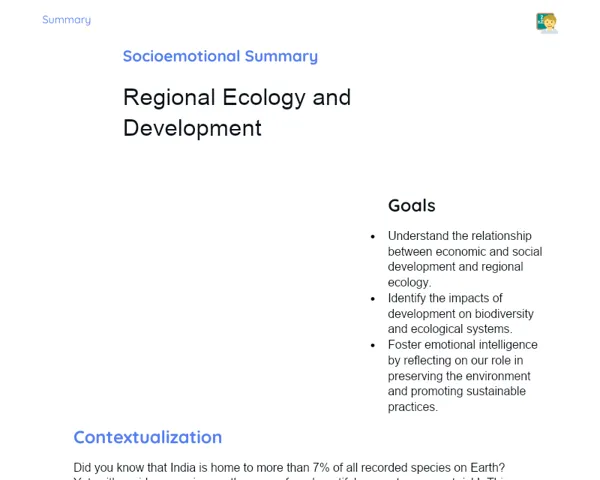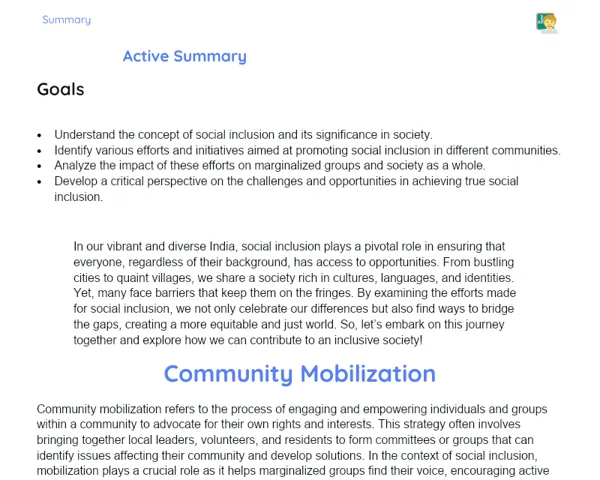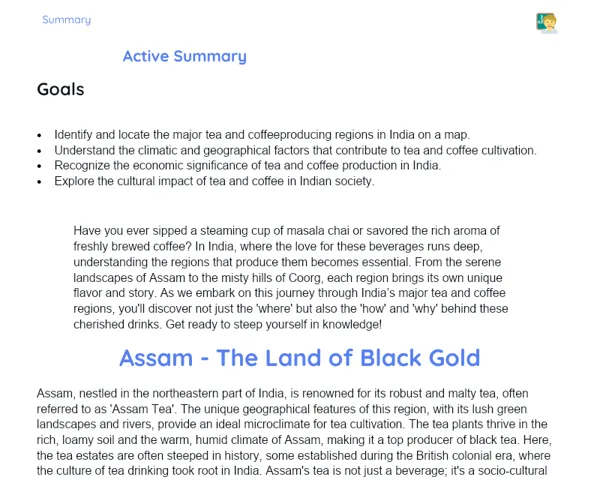Traditional Summary | Sensitivity to Social Issues
Contextualization
Did you know that nearly 1 in 7 people around the world live on less than ₹150 a day? This staggering fact highlights the widespread issues of poverty that affect millions of lives, making it crucial for us to develop a sensitivity to social issues. In our own communities, we often encounter stories of struggle and resilience that can inspire us to take action. Understanding social issues isn't just an academic exercise; it’s about connecting with real people who face challenges unlike our own.
The diverse fabric of our society is woven with various threads of culture, language, and belief, making India a vibrant melting pot! However, this diversity also brings complexities that challenge our understanding of social justice. For instance, issues like caste discrimination and gender inequality are not just historical remnants; they are ongoing struggles that demand our awareness and empathy. By being sensitive to these issues, we empower ourselves to advocate for change and to uplift those around us who may not have a voice.
Moreover, engaging with social issues sharpens our critical thinking and empathy. By exploring topics like environmental degradation, health disparities, and education inequality, we become informed citizens who can inspire action and change within our communities. Let's remember, as we delve into this subject, that every small step towards understanding can lead to a giant leap in creating a more equitable society. Together, we can make a difference! 🌍✨
To Remember!
Poverty and Economic Disparity
Poverty is a pervasive issue that affects millions in India and around the world. It limits access to basic necessities like food, shelter, and education, which are fundamental human rights. In India, the stark contrast between the affluent and the poor is a major social challenge. Economic disparity not only fuels poverty but also exacerbates issues like health inequalities and lack of educational opportunities. By understanding the layers of poverty, we become more empathetic and are inspired to advocate for effective solutions that can help uplift those in need.
-
- Understanding Poverty: Recognizing how poverty manifests in various forms (e.g., urban vs rural poverty) helps us see its complexities beyond mere statistics.
-
- Economic Inequality: There is a growing gap between the rich and the poor, which can lead to social unrest. Awareness of this gap encourages us to strive for equitable policies.
-
- Advocacy for Change: Education on poverty compels action, as we can advocate for social policies that promote inclusiveness and sustainability.
Caste Discrimination
Caste discrimination, which can be traced back centuries, remains a significant social issue in India. It is rooted in the ancient Hindu social stratification system, leading to systemic inequality. Individuals from lower castes, particularly Dalits, often face social ostracism and limited access to resources. By understanding caste dynamics, we can challenge discriminatory practices and work towards a more inclusive society that recognizes the dignity of all individuals, regardless of their caste.
-
- Historical Context: Caste has deep historical roots in India, and understanding its origins helps us grasp why it still affects social dynamics today.
-
- Effects on Society: Discrimination based on caste limits social mobility and access to opportunities, perpetuating cycles of poverty.
-
- Social Solidarity: Acknowledging caste discrimination fosters solidarity amongst diverse groups, motivating collective efforts towards equality.
Gender Inequality
Gender inequality is a critical social issue, affecting women and marginalized genders in various spheres such as education, employment, and health. Societal norms often place women in subordinate roles, limiting their potential and contributions. In India, the struggle for gender equality has seen significant milestones, yet challenges remain. By raising awareness of gender disparities, we can motivate ourselves and others to advocate for rights and equality, fostering a society that values every individual equally.
-
- Role of Education: Educating both genders equally is crucial in breaking the cycle of inequality and promoting empowerment.
-
- Economic Participation: Women’s participation in the workforce is still lower than men’s, highlighting a need for policies that support gender equality in employment.
-
- Health Rights: Understanding healthcare access disparities allows us to advocate for better health policies that address the unique needs of women and marginalized genders.
Key Terms
-
Poverty: A state where individuals lack sufficient income to meet basic needs such as food, shelter, and education, often resulting in social exclusion.
-
Caste: A traditional social stratification system in India, dividing individuals into hierarchical groups based on birth, occupation, and social status.
-
Gender Inequality: The unequal treatment and perceptions of individuals based on their gender, leading to disparities in rights, opportunities, and access.
Important Conclusions
In conclusion, our journey into the realm of social issues, particularly focusing on poverty, caste discrimination, and gender inequality, has unveiled the complex layers that shape our society. It's vital to recognize that these are not just statistics; they represent real lives, stories of struggle, and the resilience of individuals fighting for their rights. By cultivating sensitivity to these matters, we not only empower ourselves but also our communities, encouraging everyone to be advocates for change. Remember, understanding these issues is the first step towards creating a more just and equitable society. Our role as informed citizens is to recognize the challenges that others face and, in turn, work toward solutions that foster inclusivity and compassion. 🌈✨
Study Tips
-
- Engage with Real Stories: Read articles or watch documentaries about individuals affected by these social issues. Understanding their stories will deepen your empathy and perspective.
-
- Participate in Community Service: Volunteering with local NGOs or community groups exposes you to the realities of social issues and allows you to contribute positively.
-
- Discuss with Peers: Form study groups to discuss what you've learned. Sharing perspectives helps to clarify concepts and encourages diverse viewpoints, making learning more impactful.



